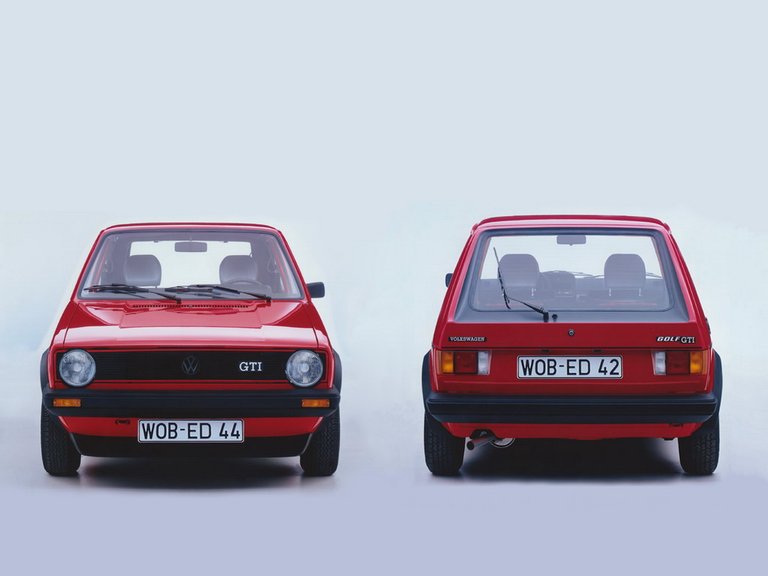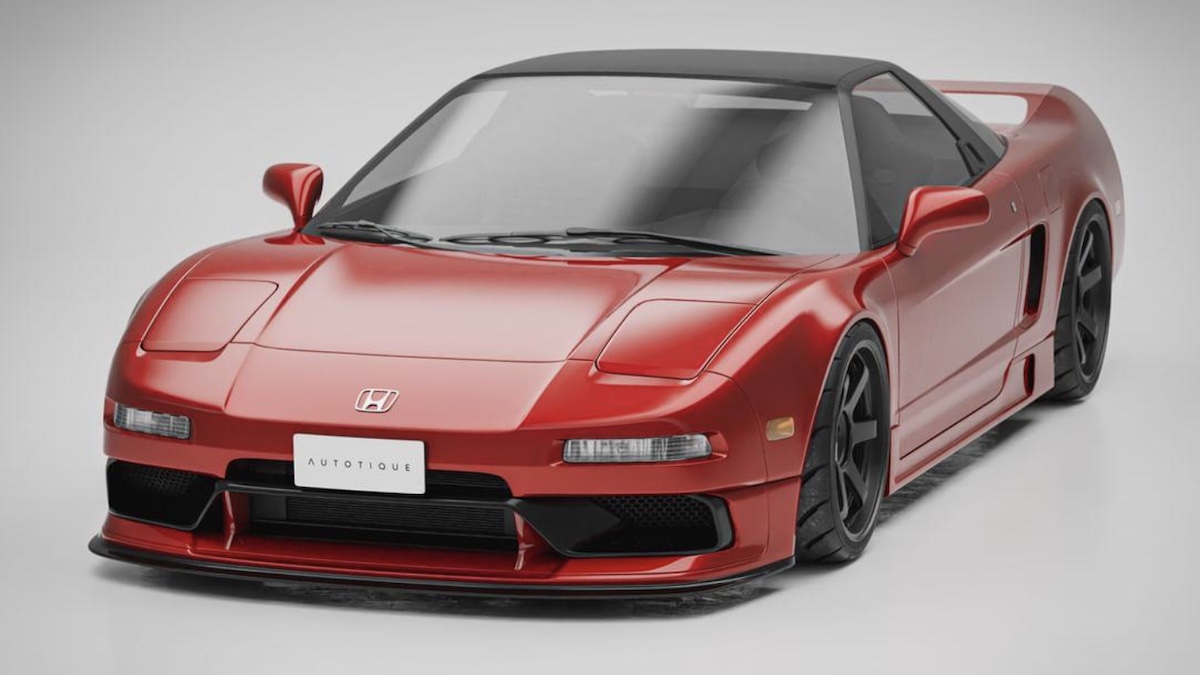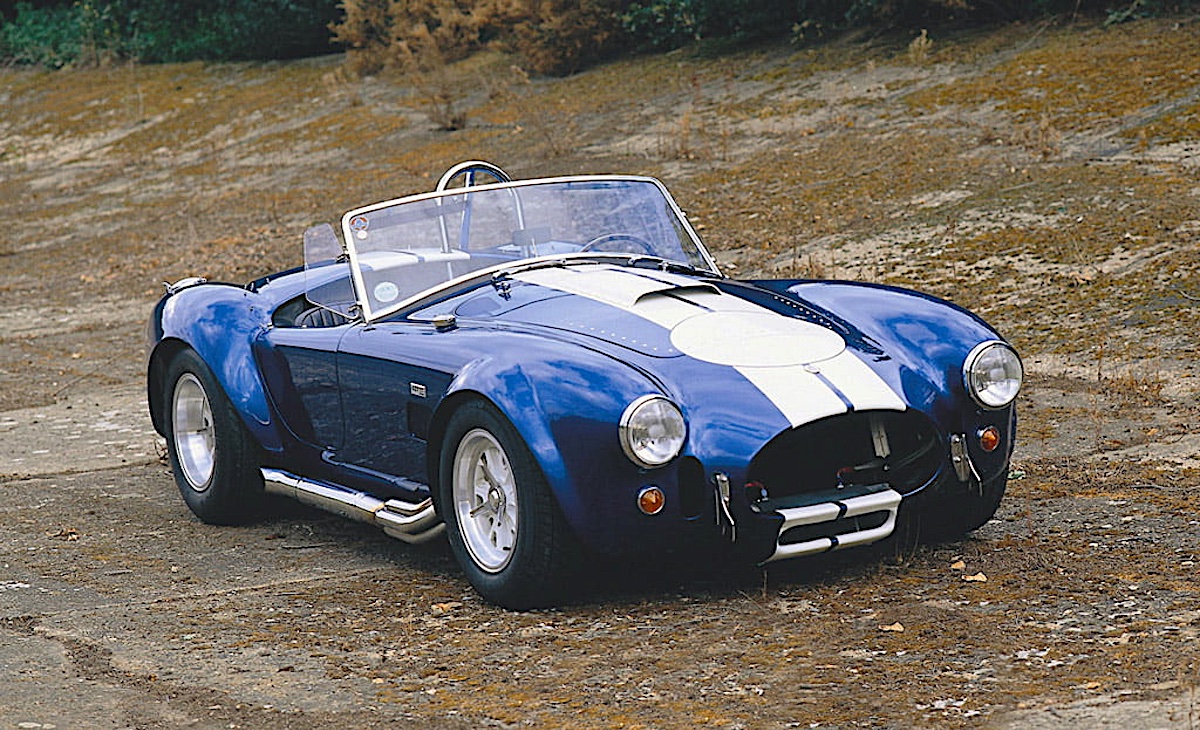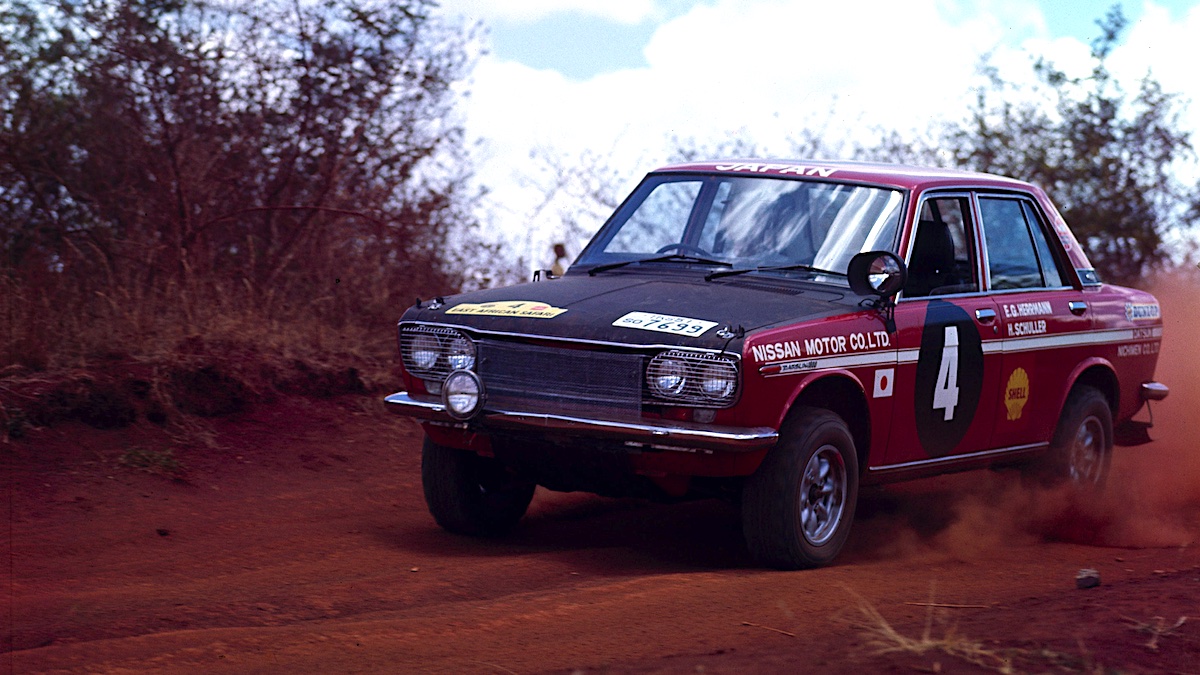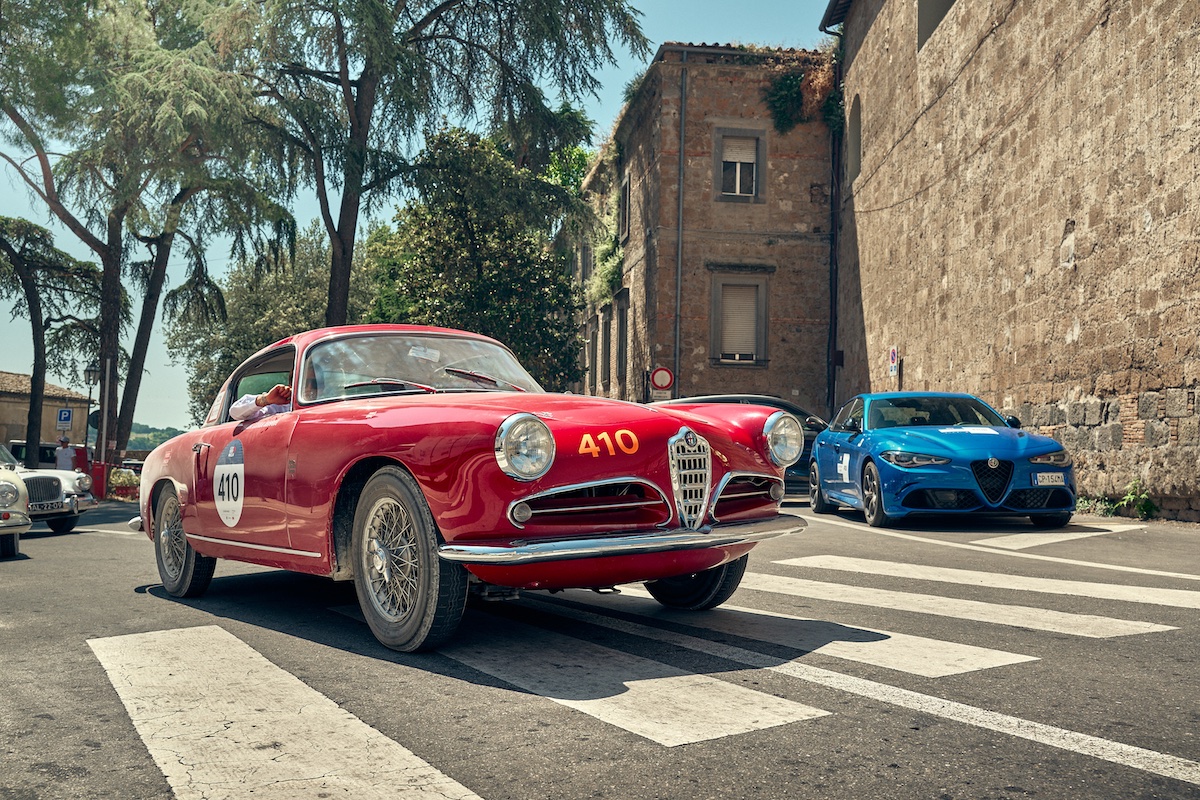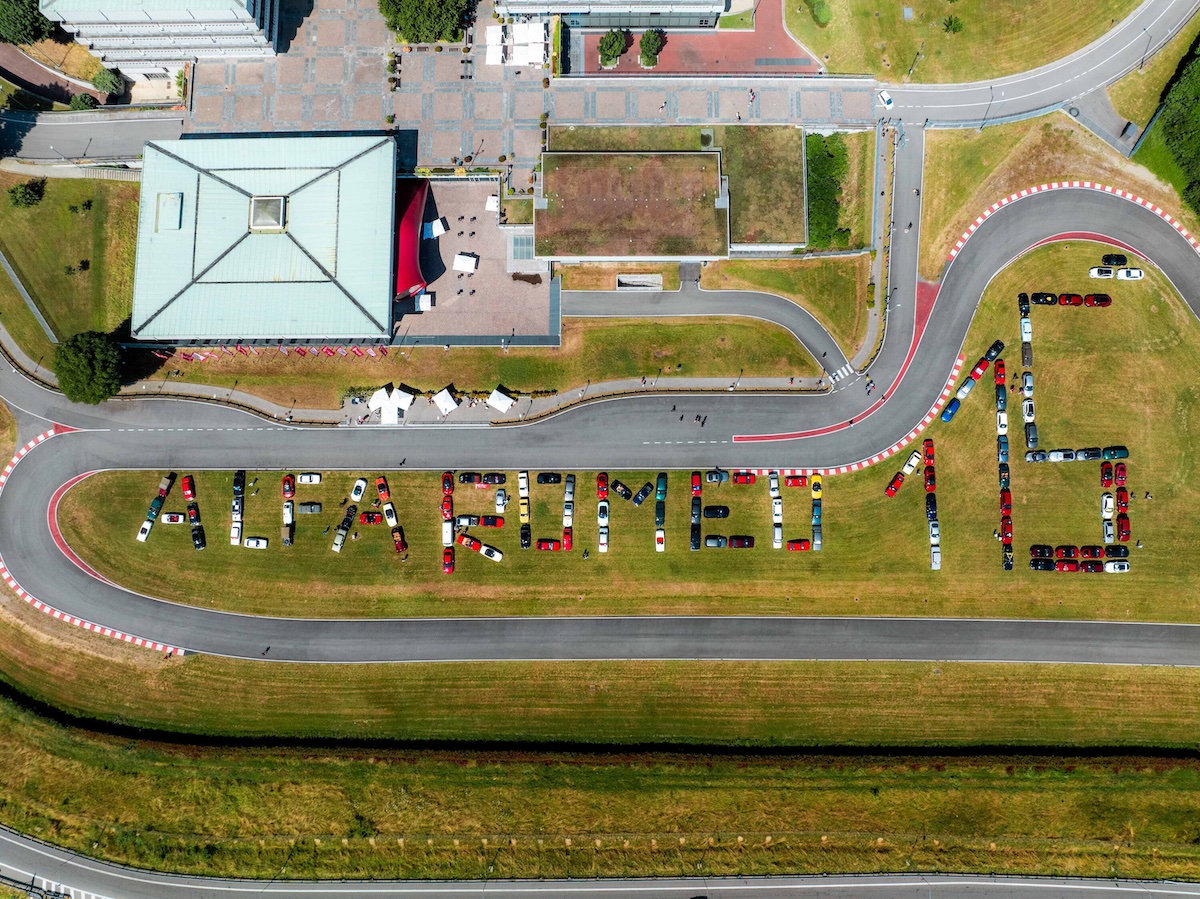How VW replaced the revolutionary Bettle with the innovative Golf, adding the now-iconic GTI badge to help pioneer the hot hatch concept.
Volkswagen began the decade of the 1970s with a best-selling small car that was rear-engined, air-cooled and little changed over the previous 30 years. Volkswagen also closed the 1970s with a best-selling car: a front-engined, front-wheel drive hatchback that would set the small-car template for the next 30 years.
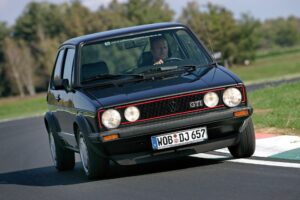
Volkswagen Golf GTi Pirelli Edition 1983
The VW Golf would also enrich the automotive lexicon with some evocative new terms: “GTI” and “hot hatch”.
The Giugiaro-penned Golf, launched in May 1974, was of course neither the first hatchback, nor the first transverse-engined front-drive car, nor the first fuel-injected one. But it wrapped all these features and many more forward-thinking ones into an attractive, entertaining yet unapologetically practical package.
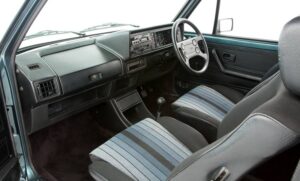
The last generation Mk 1 cars featured a slightly updated interior
The GTI was largely the bastard child of a maverick VW engineer, Alfons Löwenberg. In 1973, a limited-edition, rally-styled Beetle 1303 S Gelbschwarzer Renner (“yellow and black racer”) had, to VW’s amazement, sold like hotcakes. Test engineer Löwenberg suggested there should also be a sports-tuned version of project EA 337, the all but completed Golf project.
Few of his colleagues agreed with him. One, however, was PR boss and Formula Vee racer, Anton Konrad. Over informal beer-and-sandwiches meetings at Konrad’s house, they gradually encouraged various marketing and development bods to at least donate a prototype Scirocco – an already sportier coupe variant of EA 337 – as a mule.
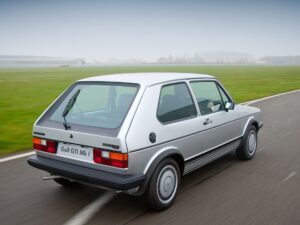
1980s cars featured wider tail lights. UK Market received specials like this Pirelli edition with “P” Wheels
After going to tuning extremes, a relatively mild mule with dual-throat carb, sports exhaust and stiff suspension was shown in 1974 to development boss Ernst Fiala. He dismissed it as too expensive, but nifty paperwork shuffling and role-reassignment kept the ‘Sport Golf’ mule alive.
Eventually convinced after a test session at Ehra-Lessen, Fiala gave it the development green light in May 1975. The performance/practicality compromise was settled with a sensibly stiffer suspension, front and rear anti-roll bars and, crucially, mechanical fuel-injection for its 1.6-litre, four-cylinder engine.
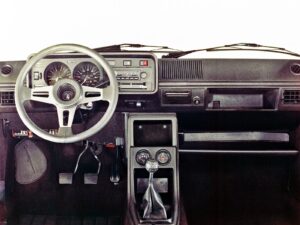
Simple interior of early model featured the classic Golf ball gear stick
The latter was a newly stroked, 1588cc version of Audi’s still-new EA827 unit, in GTI guise featuring Heron-type chambers, bigger valves and new inlet and exhaust hardware, along with the Bosch K-Jetronic for reliability. All this added up to 81kW at 6100rpm and 140Nm at 5000rpm.
Mated to the solid, but light (at 810kg) three-door Golf, the GTI delivered zero to 100 in 9.2 seconds with its four-speed manual ’box. A fifth cog was added in 1979.
The MacPherson strut front and space-saving torsion-beam/semi-trailing arm rear suspension was augmented in the GTI by anti-roll bars and heavier springs and dampers. Front brakes were vented discs on GTI, but el-cheapo drums remained at the rear.
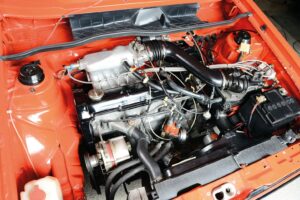
1.6 Litre engine produced good torque and power, sounded good and were bulletproof.
VW design boss Herbert Schäfer showed a light touch with the GTI’s red grille framing, stability-enhancing front spoiler, wheel-arch extensions and matt-black body accents. A golf-ball gear knob and ‘Jacky’ tartan cloth seats became GTI interior signatures.
The “GTI” appellation highlighted the fuel injection in English; “GTE”, for einspritzung, had just been nabbed by Opel for its sporty 1975 Kadett coupe.
The Golf GTI concept car shown at Frankfurt in September 1975, just four months after Fiala’s Essen proving ground sign-off, was provocatively billed as the fastest Volkswagen ever. VW announced a limited edition of 5000 GTIs, with build to commence in May 1976. By then, VW had almost 10 times that many orders.
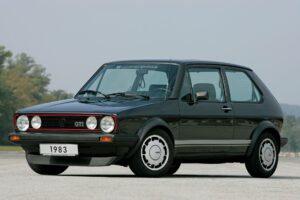
The Giugiaro-penned Golf still looks great today.
Was the GTI the first hot hatch? No. And yes. The GTI was shown in September ’75, but the Renault 5 Alpine (aka Gordini) beat it into the showrooms in early-1976.
The Mk1 GTI was built as a three-door, and in left-hook only until 1979. In 1976, Brits could import a LHD Golf GTI for around £3372, about £500 less than a Triumph Dolomite Sprint – but £100 more than a pukka Ford Escort RS2000.

Golf GTI created the hot hatch category and was a great joy to throw into corners.
The US market gave the Mk1 GTI a late-life second wind with the 1982 introduction of the Rabbit GTI, locally assembled with a wheezy, 70kW 1.8-litre engine.
By the time Mk1 GTI production ended in December 1983, some 400,000 of the injected hot hatches were ripping up the world’s roads. But not in Australia, where the Mk1 GTI was never officially imported. We would have to wait until 1984 and the arrival of the bigger, heavier Mk2.
Images: VW archive

